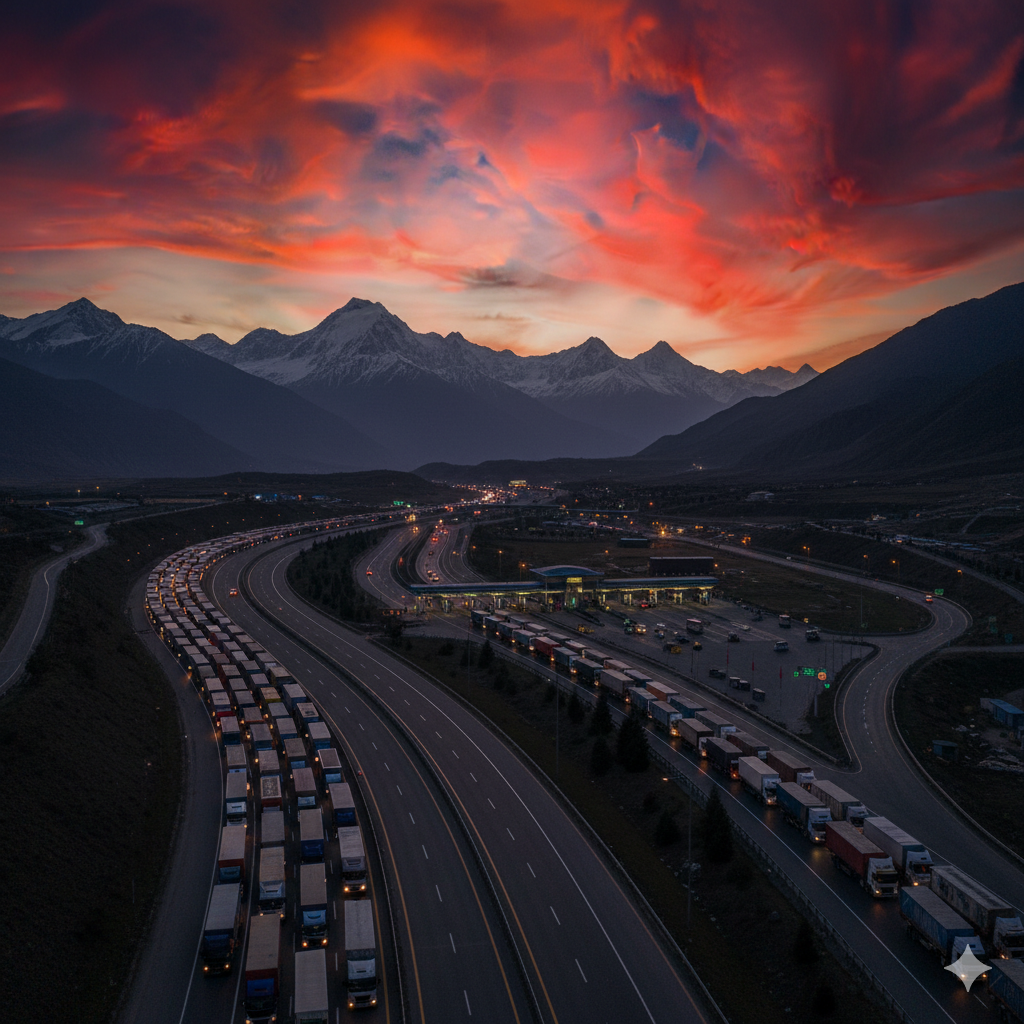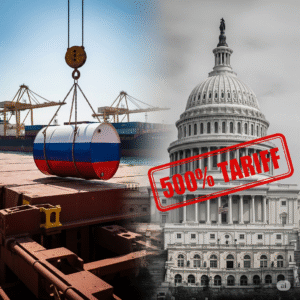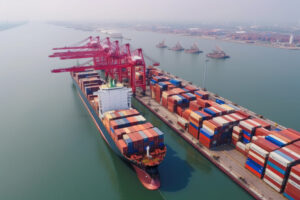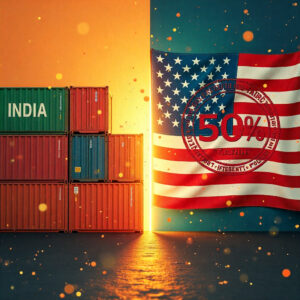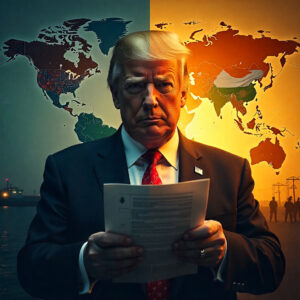Introduction
For a landlocked country like Nepal, its lifelines are its trade routes. The movement of goods—from essential daily commodities to raw materials for industries—is the very pulse of its economy.
In the wake of the recent political turmoil and civil unrest that has gripped the nation, this pulse has been severely disrupted. For logistics and supply chain professionals, understanding the profound impact on trade is critical for navigating the current challenges.
This blog post provides a detailed look at how the ongoing crisis is affecting imports and exports to and from Nepal, and what the key considerations are for businesses.
In short: Nepal’s political crisis has created a logistical chokehold, paralyzing its economy and trade, particularly with India.
Are you looking for a trusted and reliable freight forwarder in Kolkata? How about someone with 40+ years of experience in Indian customs? Let’s talk! Call us today.
Key Takeaways
Trade Paralysis: Widespread protests and a nationwide curfew have brought road transport to a virtual standstill, blocking vital trade arteries like the Raxaul-Birgunj border crossing.
Imports at Risk: As a highly import-dependent nation, Nepal faces a looming shortage of essential goods, including petroleum, food, and medicines, which are primarily sourced from India.
A Vulnerable Economy: The crisis exacerbates Nepal’s significant trade deficit and exposes its heavy reliance on India’s logistical infrastructure, creating a major setback for its fragile economy.
Table of Contents
What is the Nepal Political Crisis?
Why This Crisis Matters for Trade Now
How the Disruption is Working
Road Transport Paralyzed
Air Cargo Suspended
3 Pillars to Mitigate Supply Chain Risk
Tactical Checklist for Businesses
Tools & Resources for Navigating the Crisis
Case Study: The Impact on Indian FMCG Giants
Common Mistakes to Avoid
FAQs
Conclusion
Sources & Backlinks
What is the Nepal Political Crisis?
In short: A wave of anti-government protests, led largely by Gen Z, has resulted in the resignation of Prime Minister KP Sharma Oli. The movement is fueled by deep-seated anger over government corruption, high youth unemployment, and a controversial social media ban.
For years, Nepal has struggled with political instability. The country has had more than a dozen governments in the last two decades. A new constitution in 2015 was meant to create stability, but coalition governments and frequent power shifts have kept the country fractured.
The recent protests, while initially sparked by a social media ban, are a symptom of a deeper national frustration. They highlight the widespread disillusionment among young Nepalis who feel political elites are focused on personal gain rather than governance [1, 2].
The situation has turned violent, with protesters storming and burning homes of senior politicians and government buildings, including Parliament [3, 4].
Prime Minister Oli officially resigned on September 9, 2025, stating his resignation was to “facilitate the solution to the problem” and help resolve the situation politically in accordance with the constitution [4].
Why This Crisis Matters for Trade Now
In short: The political chaos has created a significant disruption to supply chains, threatening Nepal’s economy and impacting Indian exporters who rely on trade with the country.
Nepal’s economy is heavily dependent on trade, with imports accounting for over 90% of its total foreign trade [5]. The current unrest has brought this crucial flow to a near standstill. The potential for prolonged instability could have severe economic consequences for the nation.
For India, the situation is of major concern. India is Nepal’s largest trading partner, accounting for over 63% of its total trade volume [6]. The bilateral trade reached over $8.5 billion in 2024-25, with India exporting goods worth around $7.3 billion to Nepal alone [6].
The disruption in these trade routes could delay shipments, increase costs for consumers in Nepal, and lead to missed payments for suppliers in India [2].
Indian officials are “monitoring the situation closely” and maintaining “regular contact with export promotion councils to assess any potential risks,” according to a government source [1].
The situation also highlights the need for robust overcoming supply chain bottlenecks in customs clearance in such crises.
How the Disruption is Working
Road Transport Paralyzed
In short: The majority of Nepal’s trade relies on road transport with India, and this key logistical artery has been blocked by protests and strikes, leaving trucks stranded at border points.
The core of the problem is a stoppage of movement. The most immediate and critical impact of the protests has been a virtual standstill of transportation and commerce. Major border crossings like Raxaul-Birgunj and Sunauli-Bhairahawa, which handle the majority of imports, are experiencing severe disruptions [1, 7].
Freight entrepreneurs have declared indefinite strikes, and main roads are blocked by protesters and security forces. As a result, trucks and lorries are either stuck at border points or unable to deliver their cargo.
This has a cascading effect, creating massive backlogs and delays for all types of goods, from essential food items to industrial inputs [7].
Air Cargo Suspended
In short: The suspension of flights at Tribhuvan International Airport due to security concerns has halted the movement of high-value and time-sensitive cargo.
While the primary impact is on road transport, air cargo has also been affected. The suspension of flights at Tribhuvan International Airport due to security concerns has halted the movement of high-value and time-sensitive cargo.
While the airport has reportedly reopened, the fluid security situation means operations can be disrupted at a moment’s notice. This makes air cargo an unreliable option for the foreseeable future, further straining an already fragile supply chain.
The advantages and disadvantages of different types of transport become critical in such situations.
3 Pillars to Mitigate Supply Chain Risk
The current crisis highlights the need for a robust risk mitigation strategy. Businesses can focus on three key pillars to navigate this and future disruptions.
Pillar 1: Data-Driven Monitoring
In short: Use technology and on-the-ground communication to get real-time data on the security situation and logistical bottlenecks.
In a crisis, information is power. Companies must activate data-driven monitoring systems to track the security situation, border wait times, and road blockages in real time. Tools like Google Maps and on-the-ground reports can provide immediate updates.
Additionally, using platforms like Reuters or NDTV to get verified news alerts is critical. For example, the Sashastra Seema Bal (SSB), which guards the India-Nepal border, has stepped up vigilance and is a key source of information for businesses on the Indian side [8].
By constantly monitoring the situation, companies can anticipate delays and make quick decisions.
Example: An Indian pharmaceutical company with a shipment of temperature-sensitive drugs can use a real-time tracking tool to see a convoy stalled at the Raxaul-Birgunj border.
The company can then use that information to reroute or make arrangements for temporary cold storage, minimizing loss and ensuring compliance. This situation also brings to light the importance of understanding demurrage and detention charges.
Pillar 2: Strategic Contingency Planning
In short: Develop alternative plans for transport, warehousing, and inventory management to prepare for potential stock shortages and delays.
A contingency plan should be a living document, not just a static file. Businesses should have pre-defined alternative routes, even if they are more expensive or time-consuming.
This includes exploring air cargo for critical shipments and activating backup warehousing near border points to hold inventory. This allows for quick pivots when traditional routes are blocked.
For instance, in times of previous unrest, a company could have explored the use of the new Chinese border ports, though their logistical challenges are well-documented [6]. For this, having a reliable freight forwarding services in logistics is crucial.
Pillar 3: Diversification and Localization
In short: Diversify your sourcing and distribution channels to reduce reliance on a single route or partner.
The crisis in Nepal underscores the dangers of over-reliance on a single trade partner and route. While India will likely remain Nepal’s largest trading partner, the current chaos highlights the need for diversification.
Companies can explore sourcing from other countries or, where possible, increase local production to reduce reliance on imports. This localization strategy, a trend seen globally to mitigate geopolitical risk, can provide a more stable and resilient supply chain [5].
Learning how the US China tariff war reshapes trade for Indian businesses offers a good example of this.
Tools & Resources for Navigating the Crisis
Google Maps Traffic Data: Provides real-time information on road blockages.
India Embassy in Kathmandu: Has issued travel advisories and helplines, which are crucial for businesses to monitor.
Reuters / NDTV News: Provide live updates on the political and security situation. The complete import export and customs clearance process in India is a key resource for any business operating in this region.
Case Study: The Impact on Indian FMCG Giants
The ongoing turmoil in Nepal has put Indian fast-moving consumer goods (FMCG) companies on high alert. Many of these companies have significant operations in Nepal. Indian consumer goods giants like Dabur, Marico, HUL, and Varun Beverages operate in Nepal through their listed Indian entities [9].
According to Abneesh Roy, an executive director at brokerage firm Nuvama Institutional Equities, the Nepal issue is a “slight overhang for most consumer staples” [9].
He noted that while the impact is short-term, the bigger risk is that prolonged political instability could slow down GDP growth and disrupt supply chains [9].
He also highlighted that the Nepal business contributes a low single-digit percentage to the revenues of these companies, making the risk “manageable” for now [9].
“Our concern is also Nepal’s geographical proximity with India,” said a senior executive at a listed packaged goods company, who requested anonymity [9]. “Our partner teams are on alert, and their safety is our main concern.”
Common Mistakes to Avoid
Underestimating the Impact: Do not assume the crisis will be short-lived. Plan for prolonged disruption.
Poor Communication: Failing to communicate with local partners and customers can lead to financial losses and loss of trust.
Ignoring Local Laws: The crisis may lead to new curfews or regulations. Stay informed and compliant.
Relying on a Single Source: Do not trust a single news outlet or on-the-ground report. Cross-verify information from multiple reliable sources.
You can check a reliable guide to understanding Indian customs for seamless freight forwarding.
FAQs
What are the main items traded between India and Nepal?
In short: Key exports from India to Nepal include petroleum products, vehicles, machinery, electrical equipment, and food items, while Nepal’s main exports to India are refined oils, carpets, and cardamom.
According to data from the Indian Embassy in Kathmandu and various reports, India’s exports to Nepal are dominated by essential goods like petroleum products, vehicles, machinery, and food grains.
The trade is highly imbalanced, with India holding a significant surplus. Nepal, on the other hand, exports goods such as refined palm and soybean oils, cardamom, carpets, and polyester yarn to India.
How is the political crisis in Nepal affecting its economy?
In short: The political crisis is severely affecting Nepal’s economy by disrupting its primary trade routes, leading to potential shortages of essential goods, and exacerbating its already significant trade deficit.
The disruption of trade with India, its largest partner, has a direct and profound effect on Nepal’s economy. The country is highly import-dependent.
Blockades and transportation strikes lead to higher costs for consumers and businesses, and the inability to export goods further strains the economy. The political instability also deters foreign investment, which is critical for long-term growth and stability.
What is the current state of the Nepal-China trade route?
In short: While Nepal has been exploring new trade routes through China to diversify its partners, its heavy reliance on India’s established logistical infrastructure, particularly the Kolkata Port, remains.
Nepal’s geographical location makes it heavily reliant on its southern neighbor. While new Chinese ports in Tibet and Yunnan are now open for Nepalese goods, they have not yet replaced the established, more cost-effective, and logistically simpler routes through India.
The current crisis underscores Nepal’s need for logistical diversification, but also the challenges in achieving it. This is a topic explored in discussions about a new Russia India China trade reality.
Who are the “Gen Z” protesters in Nepal?
In short: The protests are a spontaneous movement led by young Nepalis who are frustrated with a political system they see as corrupt and dysfunctional, and which has failed to provide them with jobs and economic opportunity.
The Gen Z movement is not just a reaction to a specific policy. It reflects a deeper anger at decades of political instability, corruption, and a lack of accountability. They have taken to the streets to demand systemic change and a government that can deliver on its promises.
Is there a risk of a humanitarian crisis in Nepal due to the disruption?
In short: A prolonged disruption to the supply chain poses a serious risk of shortages of essential goods, which could lead to a humanitarian crisis given Nepal’s reliance on imports for food and energy.
Nepal imports a significant portion of its essential commodities, including petroleum products and food grains, from India. If the logistical blockades continue, the country could face severe shortages of these vital items, which would have a direct impact on the population.
Businesses and authorities are monitoring the situation to mitigate this risk.
Conclusion
The political turmoil in Nepal has effectively put a chokehold on its trade and logistics. While the long-term impact on the country’s economy and its trade relationships is yet to be fully realized, the short-term consequences are clear: a significant disruption of supply chains, a looming shortage of essential goods, and a major setback for both imports and exports. For businesses operating in or with Nepal, a careful, cautious, and well-informed approach is the only way forward.
Let us handle your imports so that you can manage your business. Get in touch on WhatsApp.
Sources & Backlinks
Nepal's political turmoil may threaten bilateral trade with India— Mint — September 9, 2025 — https://www.livemint.com/economy/nepal-political-crisis-india-nepal-trade-relations-nepal-youth-unrest-kp-sharma-oli-11757424247734.htmlGenZs, regime change and clashes - from Nepal to Bangladesh, what's good in India's neighbourhood?— Times of India — September 9, 2025 — https://timesofindia.indiatimes.com/world/south-asia/genzs-regime-change-and-clashes-from-nepal-to-bangladesh-afghanistan-pakistan-myanmar-sri-lanka-whats-good-in-indias-neighbourhood/articleshow/123780457.cmsChaos in Kathmandu: GenZ protests push Nepal to the brink – its fragile history of abrupt regime changes— Times of India — September 9, 2025 — https://timesofindia.indiatimes.com/world/south-asia/chaos-in-kathmandu-genz-protests-push-nepal-to-the-brink-its-fragile-history-of-abrupt-regime-changes/articleshow/123784591.cmsNepal unrest: Army takes charge, Kathmandu Mayor emerges as successor, India on alert, China silent & more— The Economic Times — September 10, 2025 — https://m.economictimes.com/news/international/world-news/nepal-unrest-army-takes-charge-kathmandu-mayor-emerges-as-successor-india-on-alert-china-silent-more/articleshow/123793312.cmsGlobal instability deepens Nepal's economic struggles— The Annapurna Express — September 7, 2025 — https://theannapurnaexpress.com/story/58372/Trade lifeline under strain as Nepal's crisis threatens ties with India— The Federal — September 9, 2025 — https://thefederal.com/category/business/trade-lifeline-under-strain-as-nepals-crisis-threatens-ties-with-india-205931Nepal unrest spills to border: Indian trade routes hit; UP, Bengal, Bihar, Uttarakhand on high alert— Times of India — September 10, 2025 — https://timesofindia.indiatimes.com/city/lucknow/nepal-unrest-spills-to-border-indian-trade-routes-hit-up-bengal-bihar-uttarakhand-on-high-alert/articleshow/123798926.cms‘On close watch’: India-Nepal border on alert as protests rage in Kathmandu; SSB tightens vigilance— Times of India — September 8, 2025 — https://timesofindia.indiatimes.com/india/on-close-watch-india-nepal-border-on-alert-as-protests-rage-in-kathmandu-ssb-tightens-vigilance/articleshow/123767686.cmsIndian consumer goods firms brace for Nepal unrest impact— The Economic Times — September 9, 2025 — https://m.economictimes.com/industry/cons-products/fmcg/indian-consumer-goods-firms-brace-for-nepal-unrest-impact/articleshow/123791908.cms
